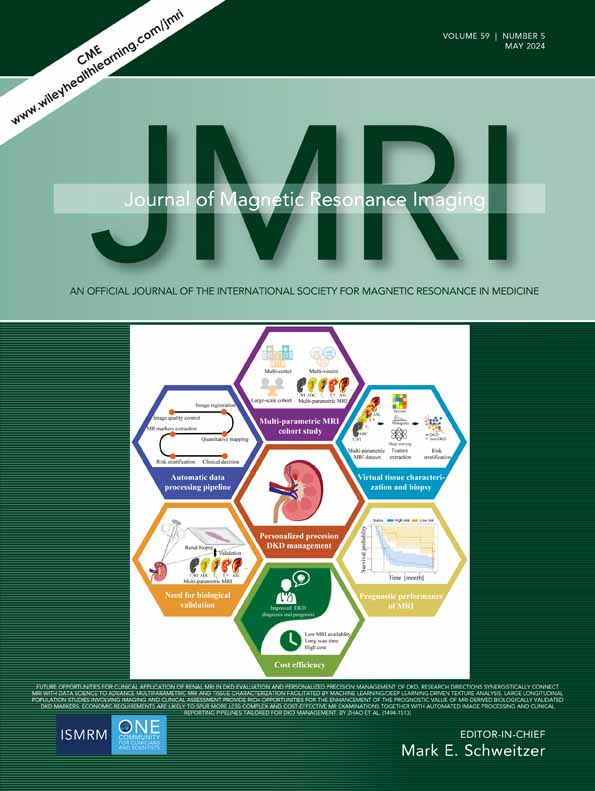Free-Breathing Compressed Sensing Cine Cardiac MRI for Assessment of Left Ventricular Strain by Feature Tracking in Children
The first two authors contributed equally to this work.
Abstract
Background
Cardiac MRI feature-tracking (FT) with breath-holding (BH) cine balanced steady state free precession (bSSFP) imaging is well established. It is unclear whether FT-strain measurements can be reliably derived from free-breathing (FB) compressed sensing (CS) bSSFP imaging.
Purpose
To compare left ventricular (LV) strain analysis and image quality of an FB CS bSSFP cine sequence with that of a conventional BH bSSFP sequence in children.
Study Type
Prospective.
Subjects
40 children able to perform BHs (cohort 1 [12.1 ± 2.2 years]) and 17 children unable to perform BHs (cohort 2 [5.2 ± 1.8 years]).
Field Strength/Sequence
3T, bSSFP sequence with and without CS.
Assessment
Acquisition times and image quality were assessed. LV myocardial deformation parameters were compared between BH cine and FB CS cine studies in cohort 1. Strain indices and image quality of FB CS cine studies were also assessed in cohort 2. Intraobserver and interobserver variability of strain parameters was determined.
Statistical Tests
Paired t-test, Wilcoxon signed-rank test, intraclass correlation coefficient (ICC), and Bland–Altman analysis. A P-value <0.05 was considered statistically significant.
Results
In cohort 1, the mean acquisition time of the FB CS cine study was significantly lower than for conventional BH cine study (15.6 s vs. 209.4 s). No significant difference were found in global circumferential strain rate (P = 0.089), global longitudinal strain rate (P = 0.366) and EuroCMR image quality scores (P = 0.128) between BH and FB sequences in cohort 1. The overall image quality score of FB CS cine in cohort 2 was 3.5 ± 0.5 with acquisition time of 14.7 ± 2.1 s. Interobserver and intraobserver variabilities were good to excellent (ICC = 0.810 to 0.943).
Data Conclusion
FB CS cine imaging may be a promising alternative technique for strain assessment in pediatric patients with poor BH ability.
Level of Evidence
1
Technical Efficacy
Stage 1




